A Day In Krakow
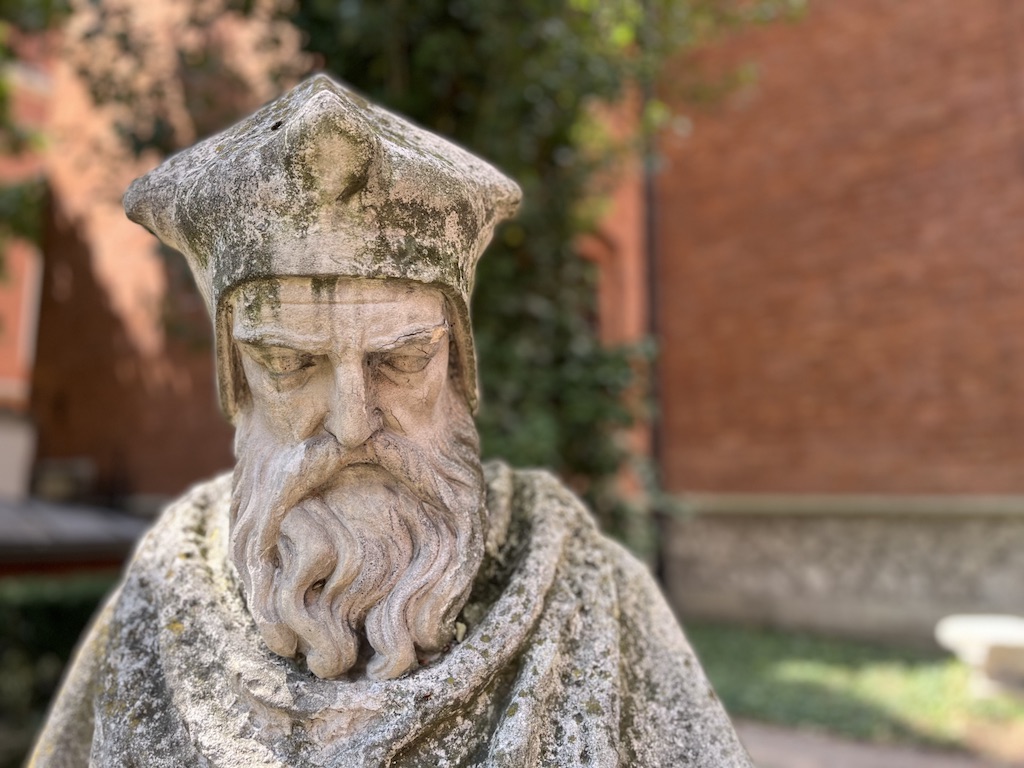
Today I am going to the Marian shrine in Czestochowa, as research for the book I'm working on. My son Matt and I came to Krakow a couple of days early so we could look around. He wasn't in the mood to go see Auschwitz, so we spent our time walking around this beautiful city in southern Poland. It's really hard to say too much good about it. Its Old Town center is one of the most gorgeous in all of Europe. People are friendly. Food is good. Architecture is inspiring, as long as you don't look at anything built by the Communists.
We were wandering after breakfast down a certain street and found ourselves amid the urban campus of the Jagiellonian University, founded in the 14th century. In our time, Pope St. John Paul II studied there as a young man. The poet Czeslaw Milosz taught there. We ducked into one of the courtyards, and gazing at the ancient stones, I thought, "This is what civilization looks like." Later, we ambled into a Professor's Garden between buildings, and saw an exhibit marking the arrest by the Nazis of the Jagiellonian faculty in an operation called Sonderaktion Krakau. It was an attempt by the Germans to eradicate Poland's intellectual elite, to prepare to Germanize the Polish people. They were sent to concentration camps, where they were kept for two years before finally being released (except the Jewish professors, who were murdered). Some of the professors died in captivity. All suffered terribly. Yet when they returned to Krakow, even though the Germans had closed the university, some of the academics formed an underground college. One of their students was Karol Wojtyla, the future pope.
It is hard to wrap one's mind around the suffering Poland endured in the twentieth century, trapped between Germany and the Soviet Union, and the twin totalitarianisms of Nazism and Communism. Is there any other nation on earth that suffered as much as this one? An estimated six million Poles died during World War II, both in fighting and in German camps; three million of those were Polish Jews.
We went over to the Krakow branch of the National Museum, which was a marvelous way to spend an afternoon. Because he's a student, Matt got in for the equivalent of twenty cents. Some parts of the museum were closed, but we spent a lot of time in the gallery of decorative arts, and in the picture gallery. I don't know enough about the history of painting to say why it's this way, but many of these paintings from the 19th and early 20th centuries reminded me of paintings of the same era I saw, and fell in love with, in the Russian State museum in St. Petersburg. There's a vividness and a freshness to them that struck my eye as different from what we are used to in Western European art of the era.
Here's a charming canvas. I think it's called "The Secret Note":
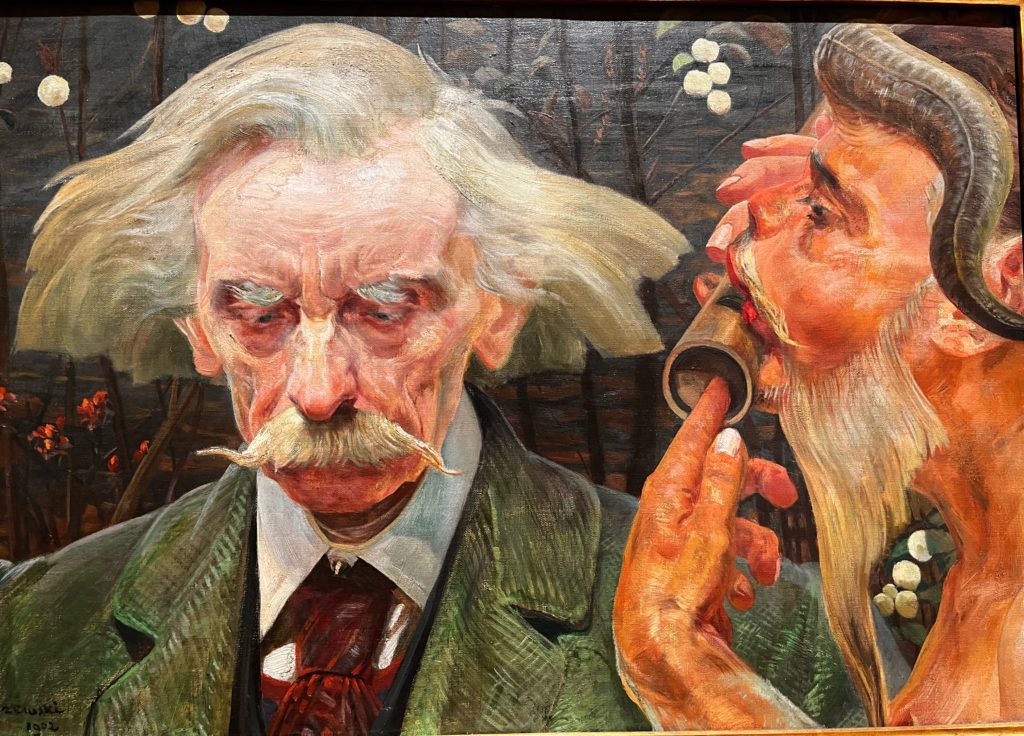
Here's a 1934 woodcut from Tadeusz Cieslewski, titled "Nostalgia," that I found striking:
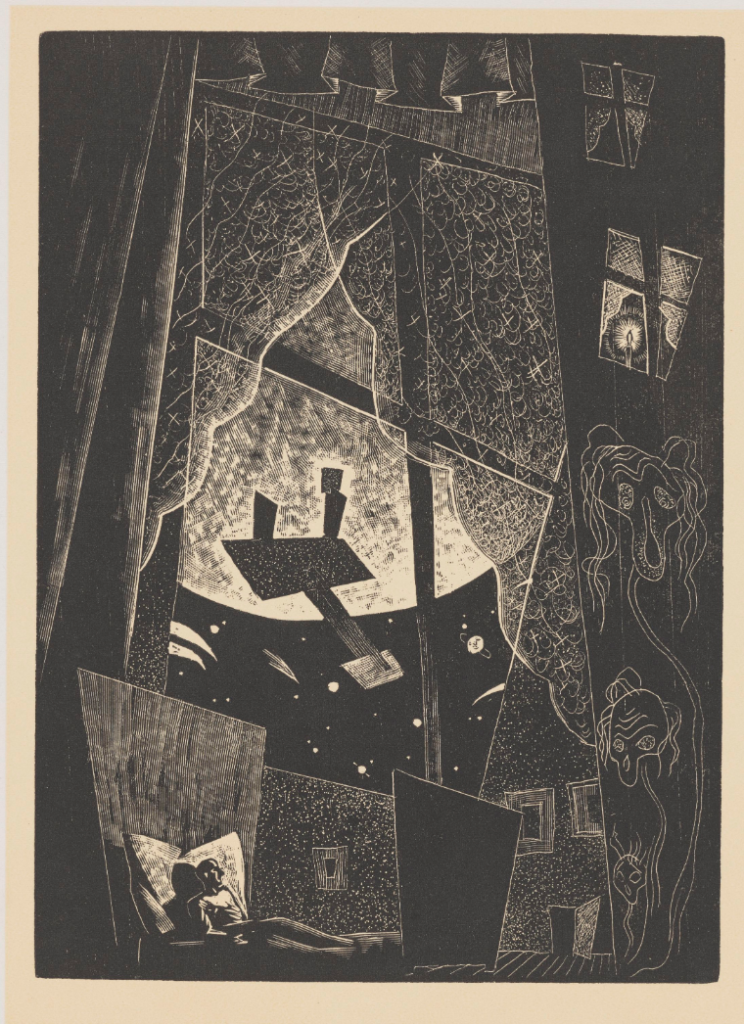
Here's a 1949 canvas by a Polish artist. Recall, of course, what the Poles had just gone through with the Nazis and their death camps. The title of this painting is "Boy With His Murdered Mother":
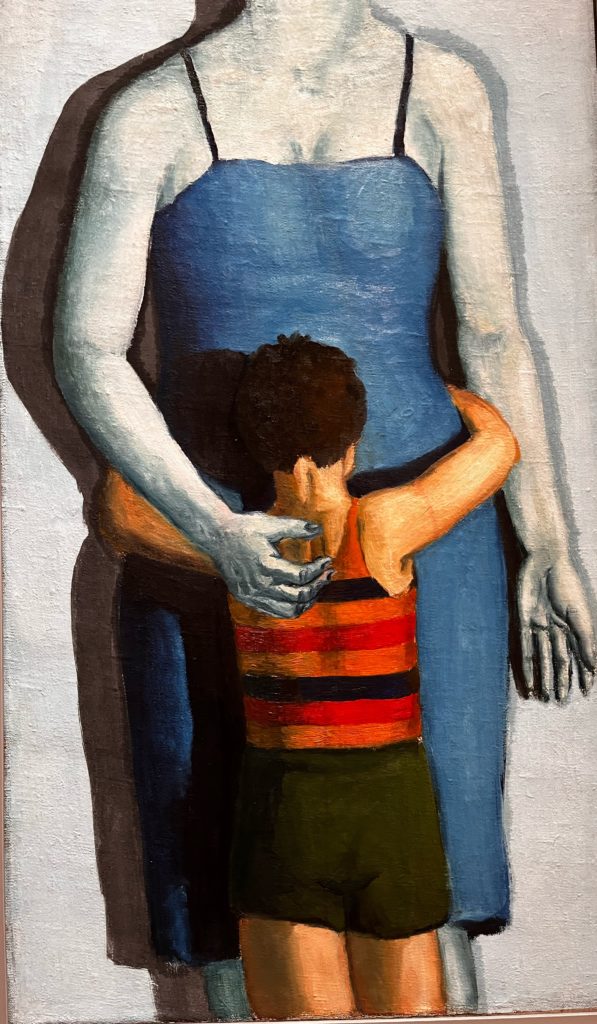
This quasi-sculpture is called "The Cloak of the Good Samaritan". It has me thinking about the family Matt and I will be staying with this weekend. They have been housing a Ukrainian war refugee family for weeks:

This one is Odysseus at sea. Notice the faces rising in the waves:
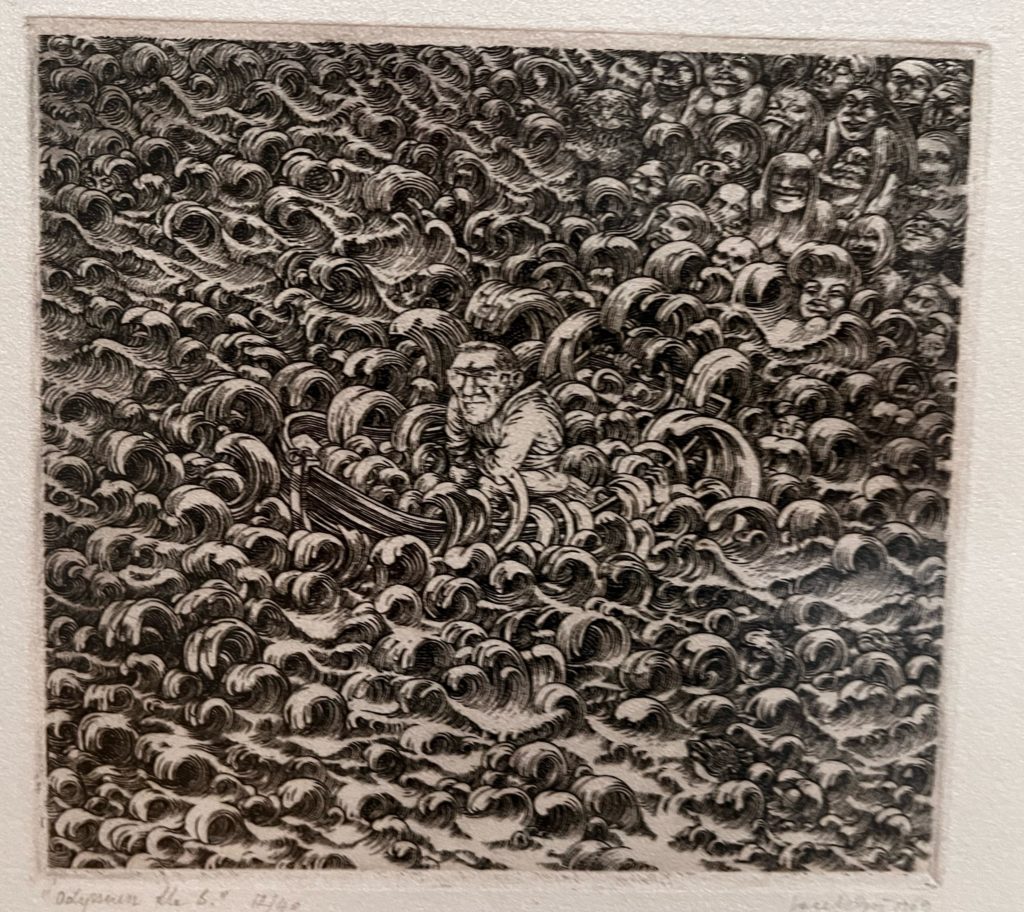
This is a 1956 painting called "Waiting Room II," created in the immediate post-Stalin period. Notice how the only sign of life in the sad woman is in her womb, where there is hope:
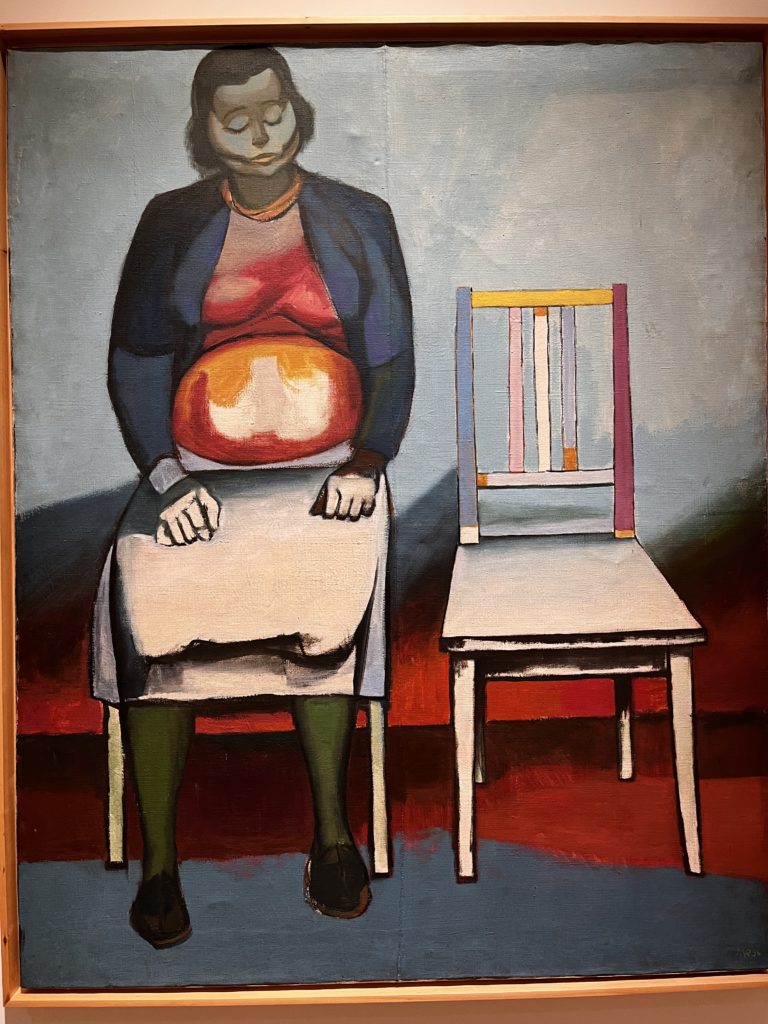
This one is the canvas that most struck me. It's a 1987 painting by Tadeusz Boruta, from a series called "Via Crucis". The cross itself is the crude skeleton of a tower; instead of footprints, there are tire tracks in the snow. Somehow, this reminds me of Paul Kingsnorth's writing:
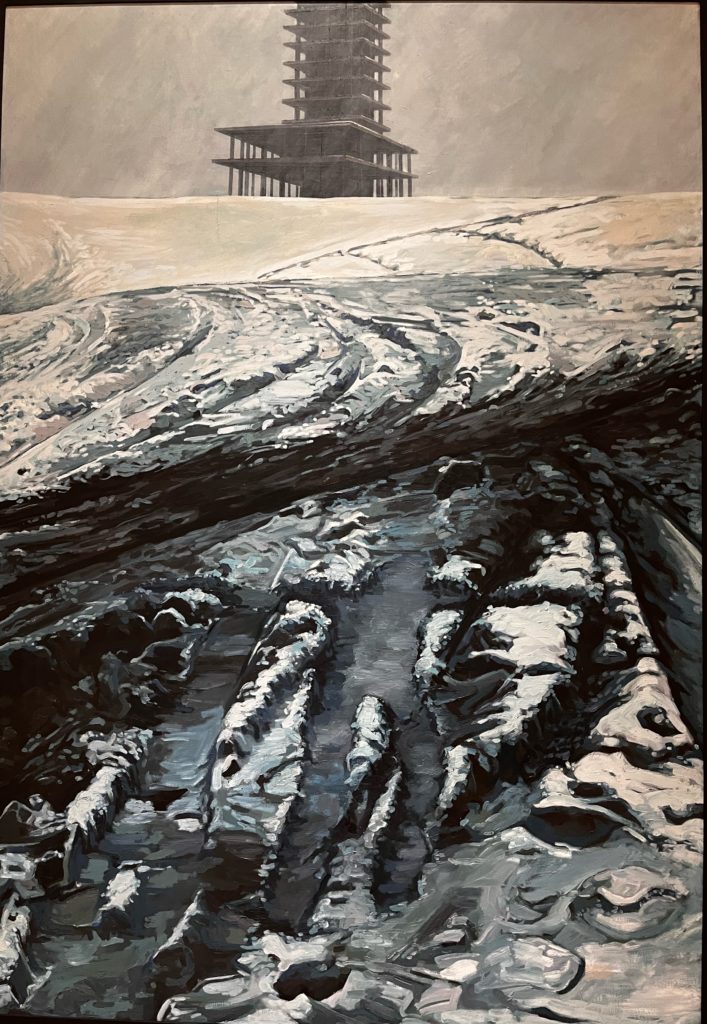
Subscribe Today
Get daily emails in your inbox
Finally, here's a 1978 painting called "Good Shepherd" by Leszek Sobocki. I think it's a self-portrait. Notice how the red pencil over his ear looks like a gash. Is this a representation of the suffering artist of the Communist dictatorship era offering his passion for the lost sheep? That's dried blood on his smock.

We are about to leave for Czestochowa. If you can, visit Krakow, visit Poland! There is so much life in Central Europe!
Both China and Russia are in the running.